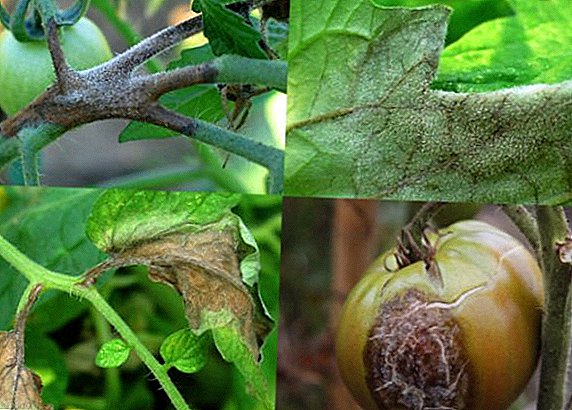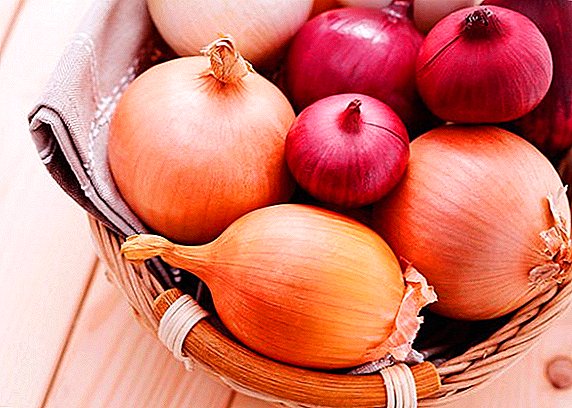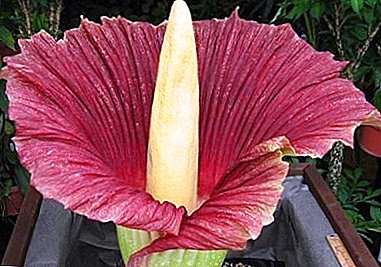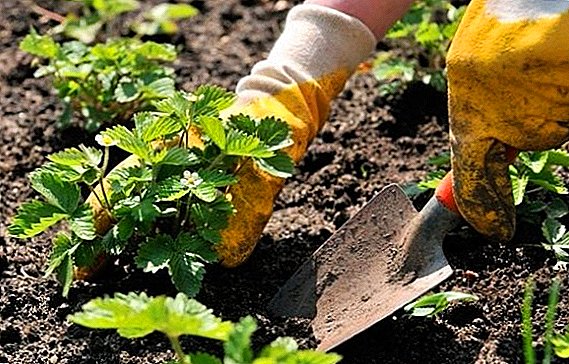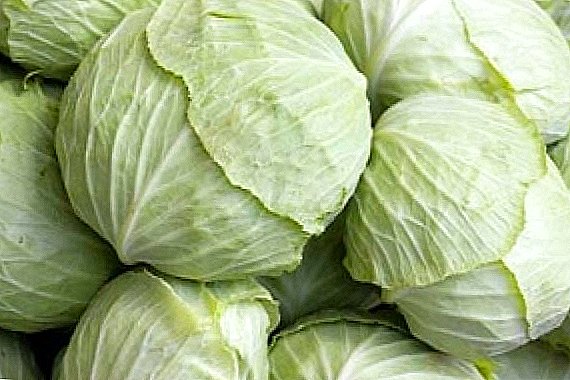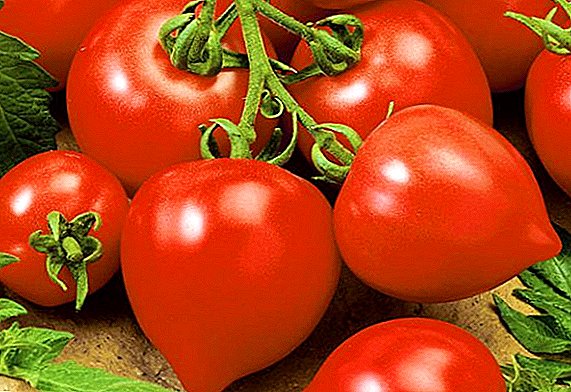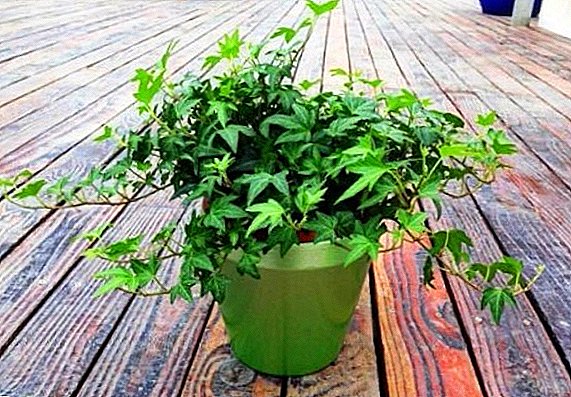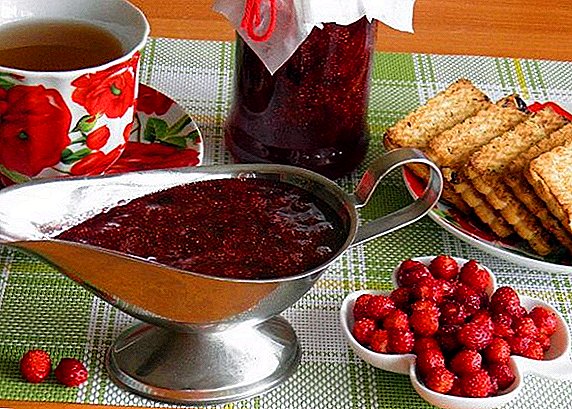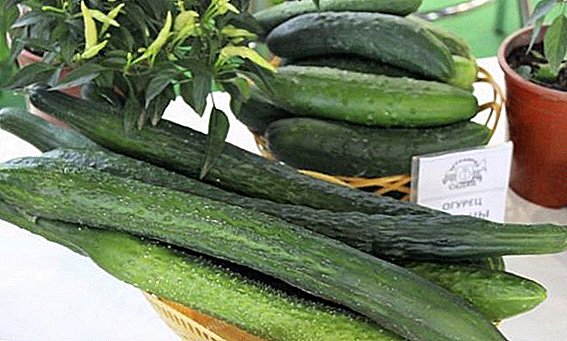 Cucumber - one of the most consumed vegetables. Fresh and juicy pulp not only nourishes, but also carries a lot of vitamins that a person needs. Fresh salads, pickles, sliced - everywhere this vegetable is appropriate. Among the many types of cucumbers can be distinguished hybrid called "Alligator F1". What makes it interesting and how to grow it - further in the article.
Cucumber - one of the most consumed vegetables. Fresh and juicy pulp not only nourishes, but also carries a lot of vitamins that a person needs. Fresh salads, pickles, sliced - everywhere this vegetable is appropriate. Among the many types of cucumbers can be distinguished hybrid called "Alligator F1". What makes it interesting and how to grow it - further in the article.
Variety description
This hybrid was bred in Russia quite recently - in 2012. It should be noted that the "Alligator F1" is an early ripe vegetable crop. In other words, the crop fully ripens 45 days after germination. Bee pollinating hybrid, characterized by prolonged fruiting. Bushes are vigorous, srednepletistye, with beam-like type of ovaries. The length of the main stem can reach 2.5 m.
Fruit characteristics and yield
The variety of cucumber "Alligator F1" can be attributed to greenhouse plants, since the length of its fruit is 35-40 cm. At the same time, it has a rather impressive weight - 300-310 g. The surface of the cucumber is large-tubercle. The most interesting thing in it is the form: a long, elongated cylinder of saturated green color. Hence the name "Alligator" because of the resemblance to the reptile.
A similar form of the fruit has a cucumber variety "Chinese miracle".
With proper planting and care, this hybrid bears fruit long and unpretentious to the conditions. 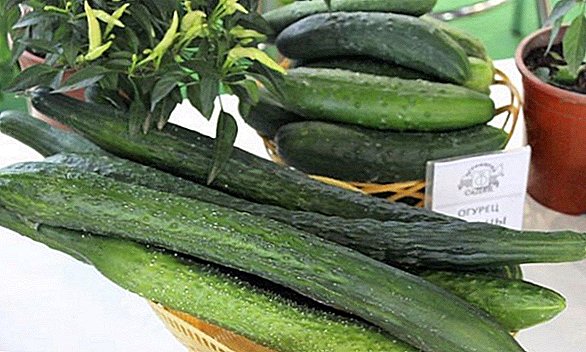
Did you know? In the UAE, breeders brought out cucumbers with square fruits. They did it to make it easier to store vegetables.
Selection of seedlings
The correct choice of seedlings - the key to a good harvest. There is a pattern: the warmer the climate, the older should be the seedlings. The younger the plant, the longer you will wait for the fruit, but the easier it adapts to the soil and the climate, the better it takes root. When choosing seedlings pay attention to such moments:
- The roots. For plants sold in cassettes (without a pot), the roots should be clearly visible. But for potted cucumbers sticking root system is not always good. Assess the state of the roots. White, young shoots quickly take root when landing. However, if you see dried out, rotten, old or ragged roots, be prepared for the fact that the plant simply will not survive. The complete absence of roots should also be alerted - cucumbers have a rather developed root system during normal development.
- Pot. Pay attention to its size. The older the sapling, the greater the capacity should be, and vice versa.
- Parasites. Naturally, it is necessary to inspect the plant for the presence of pests. In particular, special attention should be paid to the back of the leaf - the favorite place of many insects. The bad signs are deformed leaves (viruses), spiderwebs on the leaves (spider mites), black small insects on the stems (aphids), eggs on the leaves (other parasites).
- Growing conditions. If the seedlings are germinated incorrectly, this will affect the viability of the plant and the yield in the future. Light small leaves, a rare tall bush, sluggish and fallen leaves - signs of violation of the lighting and watering regime, freezing is possible. Dark stem at the base appears as a result of excessive watering and decay of the root system. But the curved and twisted leaves of a bright green color - a sure sign of growing plants in turbo mode and overfeeding it with nitrogen fertilizers. Such plants can give no fruit at all.

We recommend to get acquainted with other varieties of hybrid cucumbers: "German", "Aquarius", "April", "Merengue", "Real Colonel", "Hector F1", "Shosh".
Choosing seedlings, try to pick up plants with the minimum difference of "age". Sowing the so-called peers, you simplify the process of care, and also ensure the simultaneous appearance of the crop. It is useful to clarify whether the hardened seedlings are sold. This is not an obligatory factor, but plants prepared in this way are more resistant to bad weather and produce more yield.
Soil and fertilizer
Cucumbers "Alligator F1" are quite whimsical in relation to the ground. Choose a place to disembark should be very careful. The soil should be sandy or loamy, that is, light or medium in texture. For cucumbers, a primer is better suited, it is easily absorbed and retains water long enough for the plant to absorb it. At the same time make sure that the earth was not too heavy. If the soil in your area is clayey, it can be diluted with sand: per 1 sq. M. m soil add 2 buckets of sand.
VIDEO: HOW TO PREPARE GROUND FOR GROWING Best of all, cucumbers grow in places where they used to be: potatoes, tomatoes, carrots, cabbage, eggplants. But the places where pumpkin crops were grown before should be avoided.
Did you know? Cucumbers are beneficial primarily for their dietary properties. Minimal caloric content, ability to quench thirst, as well as acceleration of metabolism due to increased acidity - It is these properties of the vegetable that make it indispensable if you want to lose weight.
Of great importance is the acidity of the soil. It is best suited for cucumbers to be slightly acidic or neutral, which means that the pH level should be in the range of 6-7.
At home, the acidity of the soil is very easy to determine:
- In the hardware store we buy a special Alyamovsky device and litmus paper.
- We make a uniform cut of the soil with a depth of about 30 cm.
- The resulting sample is wetted and thoroughly mixed with distilled water.
- This mixture together with the litmus paper is clamped in the hand for 1 minute.
- Litmus paper attached to the scale (included) and determine the level of acidity.
VIDEO: HOW TO DETERMINE SOIL ACIDITY BY PEOPLE'S METHODS
Find out what is important soil acidity for plants and how to deoxidize the soil in the garden.
Growing conditions
During growth, the Alligator loves heat and light. The temperature should be within + 23-30 ° C. A small short-term decrease in degrees is permissible, although undesirable. However, if the temperature drops below +15 ° C, growth will stop. The place should also be light, although penumbra will do. It is very important to protect the shoots from the wind. Therefore, it is possible to grow young seedlings in film greenhouses or to protect sprouts with improvised means.
Growing from seed to seedlings at home
Cultivation of the "Alligator" at home is different from planting in the open field procedure of action.
Seed preparation
Take away large seeds without damage. Before disembarking, they should be warmed up. To do this, hold them for about a month near the heaters. The optimum temperature for them will be +25 ° C. It is proved that the heated seeds give early, amicable shoots and reduce the number of barren flowers. Hybrid seeds do not need other types of preplant preparation. 
Content and location
Cucumber seeds should be sown in small containers with a height of 10-12 cm. For the best seedlings, it is necessary to prepare in advance a soil mixture of small and old sawdust, humus and peat in a ratio of 1: 2: 2, and also add (per 10 l) 1.5 Art. l nitrofoski and 2 tbsp. l ash. Thoroughly mixed mixture is ideal for sowing.
Seed planting process
If the preparation of soil and seeds was carried out correctly, the planting process will not cause any difficulties:
- Tanks should be filled to the top with the previously prepared mixture.
- Then seeds are sown, strictly one by one into the container.
- Pour over a small amount of water.



Care of seedlings
As soon as the first leaves of the seedlings appear, it is necessary to accelerate the process of its growth with the following solution:
- 3 l of warm (not below +20 ° C) water;
- 3 tsp. nitroammofoski.
Transplanting seedlings to ground
If you did everything right, then the plants will be ready for planting in an open area in 27-32 days. Here, too, everything is simple. We prepare the beds in advance, namely - we make holes 3-5 cm deep with a distance of about 60 cm from each other. Transplant the shoots into the ground. We carefully dig in the ground in order not to damage the sprouts. We water.
Agrotechnics growing seeds in open ground
The method of growing "Alligator" on the open field has its own nuances, but, in general, is completely uncomplicated.
Outdoor conditions
As we have already found out, the cucumber "Alligator F1" loves light, heat and water. In this regard, it is proposed to choose the southern side for its cultivation. Of great importance is also the climate of the region. So, if you live in the northern strip, these cucumbers will be better in greenhouses.
We advise you to learn about all the intricacies of growing cucumbers in the greenhouse.
 Do not forget that These plants have a long main stem, so strong winds can be disastrous for them. Remember that fruits must hang to full maturity, otherwise they may be deformed. From the above, the conclusion follows: before planting cucumbers of this hybrid, you need to carefully examine the soil on your site and the weather conditions in your region. If both are suitable, then the Alligator F1 cucumbers can be safely grown in open ground.
Do not forget that These plants have a long main stem, so strong winds can be disastrous for them. Remember that fruits must hang to full maturity, otherwise they may be deformed. From the above, the conclusion follows: before planting cucumbers of this hybrid, you need to carefully examine the soil on your site and the weather conditions in your region. If both are suitable, then the Alligator F1 cucumbers can be safely grown in open ground.
The process of planting seeds in the ground
To plant cucumber seeds in open ground, there are two methods: linear and square. Let's take a closer look at both options.
Linear method
- We draw two furrows 6-8 cm deep at a distance of 20-25 cm from each other. With this method, the seeds are laid in steps of 2-3 cm.
- Then sprinkle them on 2-3 cm in the soil and on the same - with peat.
- We pour water.
 Square way
Square way
- We divide the beds into squares measuring 80 * 80 cm or 90 * 90 cm; at the intersection we make indentations of 10-15 cm.
- In the wells should be placed 2-3 kg of manure and a pinch of universal mineral fertilizers, mix thoroughly with the soil.
- In each such hole we plant 5-6 seeds.
- When they germinate, you will need to leave 1-2 of the strongest shoots.
Watering
To get a high-quality, abundant and tasty harvest, you need to water the plants with warm water. Before flowering - no less than 6-8 days, and during the fruiting period - every 3-4 days. Remember that water should fall into the ground, and not on the stems. Remember that if the roots do not get enough moisture, the plant can get sick or fade.
Soil loosening and weeding
As mentioned above, it is very important that the roots get the moisture they need. To do this, periodically need to loosen the soil. You can do it this way: take pitchforks and do them with neat punctures between rows to a depth of 2-4 cm. At first, this should be done after each watering.  When the plants grow - loosening can stop. But remember that the beds must be clean of weeds, regardless of the stage of plant growth.
When the plants grow - loosening can stop. But remember that the beds must be clean of weeds, regardless of the stage of plant growth.
Masking
Ganging - cutting off excess shoots (stepchildren), which take away power from the whip, which leads to the loss of fruit. In order to enjoy the first harvest by mid-June, it is necessary to properly and carefully make a pasynkovanie.
As a rule, the first 5-6 leaves should be removed, as well as the ovaries in the axils of the first 3-4 leaves. But be very careful and careful not to damage the main trunk and the flowers on it. To do this, slightly pull off the leaf with one hand, and with the other, carefully pinch off the stepson at the stem itself. But this can be done not earlier than the stepsons become 3-6 cm in size. 
Garter
Since the plant is quite tall, with a long stem, as well as long and heavy fruits, it must be tied up. It is recommended to grow this hybrid on trellis heights up to 2 m. A double sliding knot will help not to damage the whip, but securely attach it to a trellis.
To grow a good crop of cucumbers in a small area, we recommend installing a trellis grid.
Top dressing
The process of feeding takes place in several stages. The first time the procedure is carried out after 7-10 days after planting. The mixture is prepared from such ingredients: 10 liters of water, 10 g of superphosphate, 10 g of ammonium nitrate, 10 g of potassium salt. This dosage is designed for 10-15 bushes.
After 2 weeks, you need to repeat feeding, doubling the amount of fertilizer on the same volume of water. But during the fruiting period, it is worth 1-2 times to fertilize with mineral fertilizers (per 1 sq. M): 15-20 g of urea or a mixture of ammonium nitrate, superphosphate and potassium sulfate in a ratio of 1: 2: 1.
To make the cucumber grow faster, it needs a lot of carbon dioxide - for this, the bushes are covered with a mullein. At the same time, it is necessary to be extremely careful that the fertilizer and the plant do not come into contact, since the mullein may cause a burn of the plant.
VIDEO: SUPPORTING CUCUMBERS DURING FLOWERING
Pests, diseases and prevention
The basic rules for the prevention of disease in cucumbers:
- choose only quality seeds;
- sow seeds only in heated soil;
- remove all residues from previous plants from the soil;
- regularly weed beds from weeds.
Familiarize yourself with proven cucumber pest control methods.
As for parasites, cucumbers may be subject to the following scourges:
- spider mite - braids the leaves below, pierces the skin and drinks the sap of the plant;
- melon aphid - a small insect, which also likes to settle on the back of the sheet;
- gray rot - on the stalk forms large gray or brown spots, and on the fruit - gray fluffy bloom.



Find out what is dangerous aphid on cucumbers and how to deal with it.
Please note that no desinsector provides a 100% guarantee if you use it one-time. Follow the instructions, carry out processing several times, destroying not only the resistant individuals, but also their possible offspring.
Harvesting and storage
If everything was done correctly, then after 45 days you can wait for the harvest. Morning and evening are considered to be the best time to pick fruit. To keep the fruits fresh longer, they should be placed in a dark, cool place. It is not necessary to wash the green leaves before putting it in storage, because they have their own protection against rotting. But when washing the fruits get microdamages (scratches, plucked hillocks and tails), in which an infection appears and the product starts to deteriorate.
Possible problems and recommendations
In the process of growth, plant leaves may have problems in the form of powdery mildew, copperskin and yellowing.  One of the causes of powdery mildew may be calcium deficiency or an excess of nitrogen in the soil. To combat this disease, a 1 percent solution of Bordeaux liquid or a 4 percent solution of ferrous sulfate is used. To prevent the spread of vermilk (anthracnose) on vegetables, you need to use fungicides ("Fitosporin", "Topaz").
One of the causes of powdery mildew may be calcium deficiency or an excess of nitrogen in the soil. To combat this disease, a 1 percent solution of Bordeaux liquid or a 4 percent solution of ferrous sulfate is used. To prevent the spread of vermilk (anthracnose) on vegetables, you need to use fungicides ("Fitosporin", "Topaz").
The most common cause of yellowing leaves is temperature drops and lack of potassium. To protect the plant, simply cover it with a film for the night, and add potassium directly to the top dressing.
A hybrid variety of cucumber called "Alligator F1" gives large and juicy fruits, easy to grow. With a little effort to care for him, you can get excellent results.


